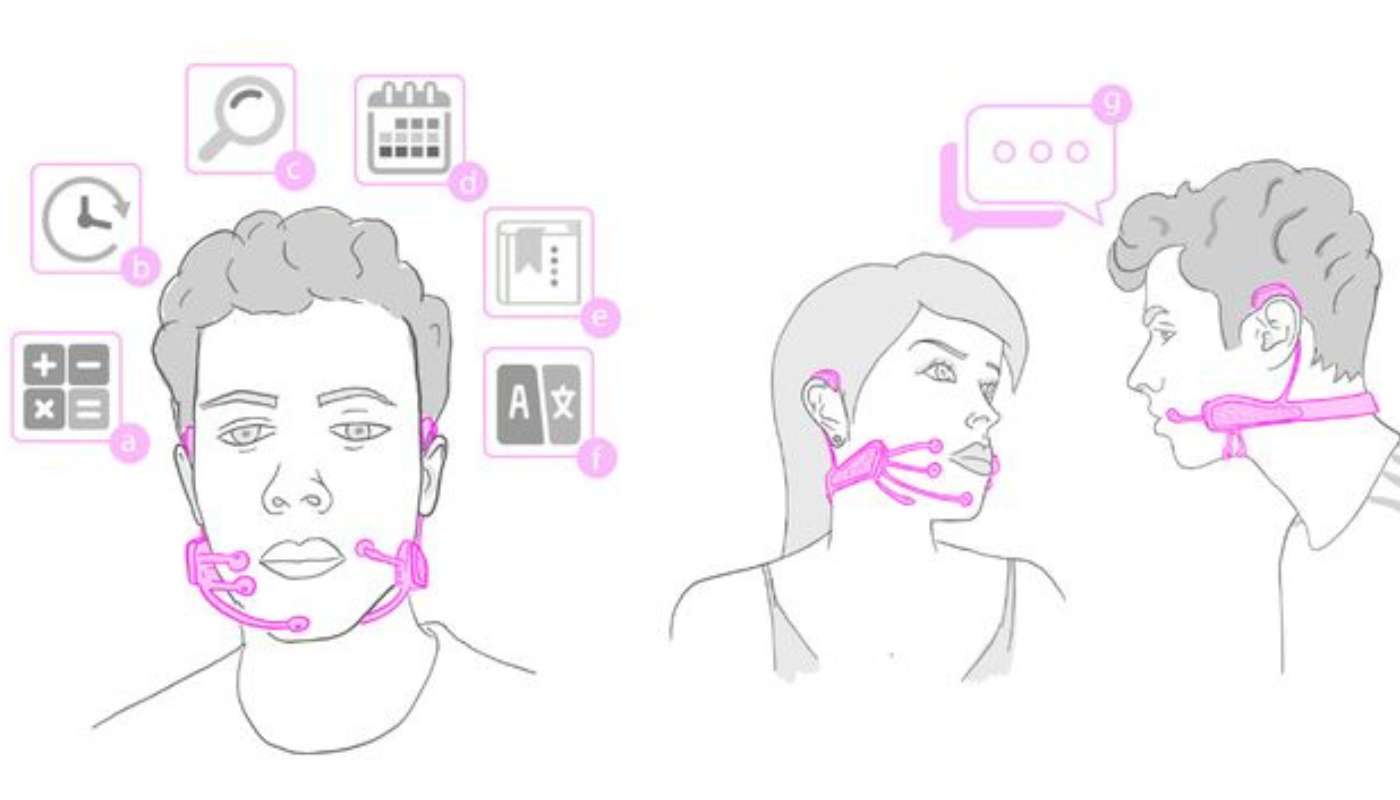In a fascinating development, a student from the prestigious Massachusetts Institute of Technology (MIT) introduced AlterEgo, an innovative AI-enabled device. AlterEgo allows users to engage in natural language conversations with machines, AI assistants, services, and even other individuals without speaking a word aloud. Instead, users can articulate words internally, making communication seamless and discreet. Developed by Arnav Kapur, an ingenious student from Delhi, India, AlterEgo harnesses peripheral neural signals during internal speech articulation, offering a fascinating glimpse into the future of human-computer interaction.
Also Read: AI Model That Can Translate Brain Activity into Text

AlterEgo: The Invention that Speaks Without Words
AlterEgo represents a cutting-edge technology that revolutionizes the way we communicate. The device captures internal speech articulators’ neural signals when users mentally articulate words. This enables users to transmit and receive information to computers or others without any observable action or external movements.
Also Read: Audio Denoiser: A Speech Enhancement Deep Learning Model

AI Embracing Privacy and Discretion
Unlike conventional communication methods, AlterEgo respects users’ privacy by eliminating the need for spoken words or visible actions. With this device, users can effortlessly converse without disrupting their surroundings or unplugging from their environment, making communication more discreet and seamless.
Also Read: UNESCO Raises Privacy Concerns About AI Chip Implantation
The Power of Non-Verbal Conversations
A viral video showcasing Kapur wearing AlterEgo during an interview astounded viewers. Responding to questions without uttering a word, the MIT student demonstrated the device’s impressive capabilities, evoking awe and excitement. “You have the entire internet in your head,” exclaimed the interviewer, marveling at the seamless communication.

Empowering Those with Speech Disorders
AlterEgo holds tremendous potential in aiding individuals with speech disorders like ALS and MS. By providing an alternative means of communication, the device offers a lifeline to those who face challenges expressing themselves verbally, unlocking new possibilities for independence and connectivity.
Also Read: On-Device Personalization of ASR Models for Disordered Speech
Paving the Way for Human-Computer Integration
Beyond supporting individuals with speech disorders, AlterEgo envisions a future where humans and computers intertwine harmoniously. By seamlessly integrating computing, the internet, and AI into daily life as a “second self,” the device augments human cognition and abilities, promising a world where technology extends our innate capabilities.
Also Read: Introduction to Human Computer Interaction (HCI) With Examples

Our Say
The invention of AlterEgo by MIT student Arnav Kapur marks a significant milestone in the realm of communication and human-computer interaction. With the ability to converse internally and effortlessly communicate with machines and others, the device offers endless possibilities for privacy, convenience, and empowerment. By focusing on supporting individuals with speech disorders and envisioning a future of seamless human-computer integration, AlterEgo paves the way for a transformative future where technology becomes an intrinsic part of our lives. As the world celebrates this ingenious creation, we eagerly await the day when AlterEgo reshapes communication as we know it.




